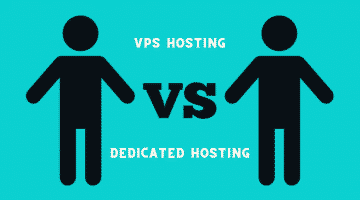Let us understand the terms website and web hosting, and then we will see the details of web hosting. Your website is your online presence, and it is a place of your own on the internet. It is a place, where you can mention about your business, services, contact details, etc. It is a starting point for your internet presence.
Web Hosting
When you create a website, it needs a home; which is a hosting server connected to the World Wide Web. The service which hosts your website on the internet is a web hosting service. Based on your choice, the server will host either your website only or there can be many websites on your server. Web hosting is your physical home (made up of computers), and website address is your home address.
Internet Address
The internet address you select for your business is called the domain name, which you need to purchase a web hosting or domain name selling the business. This domain name and your website are connected, and your users type this name in a web browser and reach your website. When you buy a domain name, it is exclusively for your website but for a limited time, like leased/rented name. The owner name, contact, address, domain name and expiry date get stored in a record named as ‘Whols’ record.
Different ways of Hosting
Shared Hosting is where the Server sharing is across multiple websites. There will be a common pool of resources for all websites on that server. Your website is one of the hosted sites on this server, and you will get the required resources (RAM, Storage Space, Processing power, etc.) as per your requirement, and you will pay for what you select. If you are a new Startup or a small business, this hosting is good for you. Shared hosting is often carried out as freelance work.
Virtual Private Server (VPS) Hosting is again a shared hosting, but the server has virtual partitions. It means you have more security than shared hosting and more access to the server environment. The portioning provides you better control on your server environment. It is a mid-way between the shared hosting and dedicated server.
As the name says, a Dedicated Server Hosting is where you have your server. Your website is the only website on this server, and you have full control over the server. Because of root level access, you can manage multiple parameters which help you to improve the performance of your server/website.
Last and most famous hosting today is Cloud Hosting. Cloud hosting partners have a large number of servers working together. They host multiple websites on these servers. As there are multiple computers working together, the resources available are plenty. You can quickly increase the resources as a result of high traffic. You can select the resources you want, can add more resources quickly and pay as you go.
Top Level Domain and Sub Domains
You have seen thee domain names ending with .com, .au, .uk, .co, etc. The websites with these names are top level domain (TLD) names. There are different rules and regulations related to use of these extensions. In some cases, availability and your choice are also important to select a particular domain name. In above example, .au for Australia and .uk for websites from the United Kingdom are the country code TLDs.
When Google.com is the TLD, when you access Gmail, you go to the email hosting part of their cloud servers. The domain name you see here is mail.google.com, which is a part of the main domain, which is commonly known as a sub domain. Another example is finance.yahoo.com is a sub domain under the main domain/ TLD yahoo.com
Data Transfer Rate and Bandwidth
When you select a hosting space for your website from a web hosting partner, space which you get on the server is the storage space. The rate at which you can transfer the data to and from the website is the data transfer rate/bandwidth. Whatever data you upload/download is the commonly referred as data/data transferred. Normally there are no issues related to data transfer to any hosting provider. While hosting your website or transferring large data from your computer to the hosting computer, you need to use data transfer tools. These tools are known as File Transfer Protocol (FTP) tools. You can get multiple free tools to use FTP and transfer files from one system to another.
Considerations for Selecting the Right Hosting Provider
Uptime is the most important criteria, and except for a scheduled downtime for some critical maintenance (in off-hours), you expect 100% uptime. Your website is your online presence to the world, and you need it to be available 24 X 7 and all 365 days of the year, so uptime is the most important criteria. Take help of freelance web designer to design the right size website with good performance and correct hosting partner.
Customer support is equally important and may be critical when there is any issue with installation or at a later stage. Availability of customer support executives over chat or phone is more important than just email support.
Scalability is an important factor for growing businesses. If you see a sudden spike in your visitors due to the SEO efforts or some other factor, you need more resources. If the hosting provider can quickly adjust the settings manually or automatically, it is great. With Cloud hosting partners like Google, Amazon, and Microsoft; it is very easy to get any resources on demand.
For Startups and new businesses, the cost is extremely important, and they prefer online presence at lesser monthly payments. Make a cost comparison between different web hosting partners before you go with only popular names.
Summary: As a freelance web developer, you need to be well aware of basics of web hosting as there are more chances of clients asking you to manage their website also. Know about website address/domain name, the web hosting methods and selecting the right hosting method for the performance of your website.


